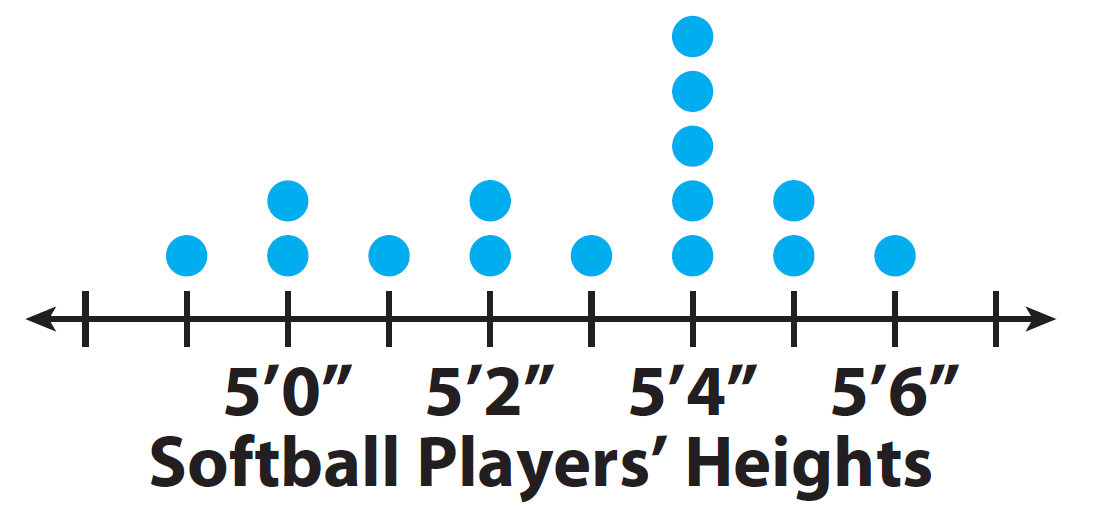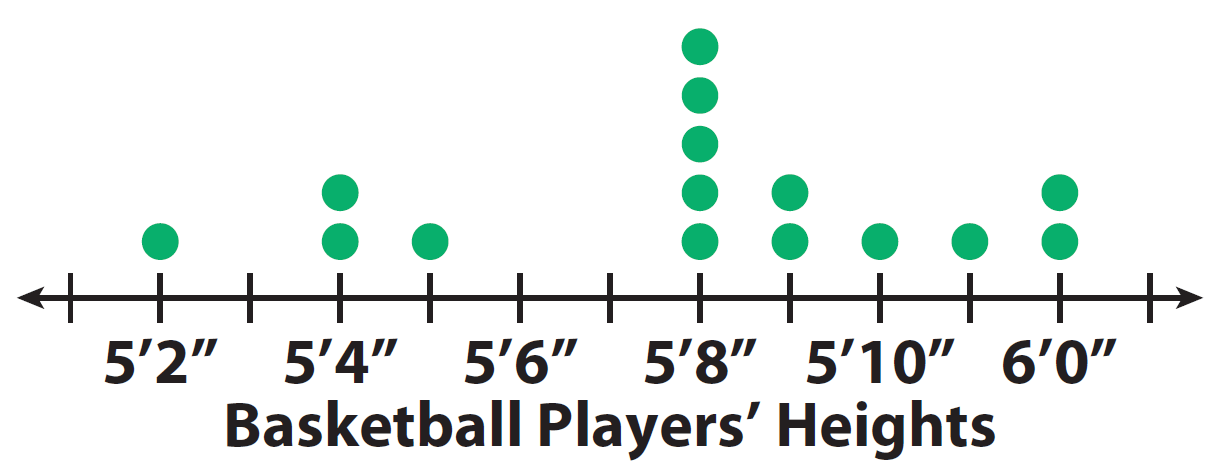ANALYZING AND COMPARING DATA WORKSHEET
Subscribe to our ▶️ YouTube channel 🔴 for the latest videos, updates, and tips.
Problem 1 :
People once used body parts for measurements. For example, an inch was the width of a man’s thumb. In the 12th century, King Henry I of England stated that a yard was the distance from his nose to his outstretched arm’s thumb. The dot plot shows the different lengths, in inches, of the “yards” for students in a 7th grade class.

Questions :
1. Describe the shape of the dot plot. Are the dots evenly distributed or grouped on one side ?
2. Describe the center of the dot plot. What single dot would best represent the data ?
3. Describe the spread of the dot plot. Are there any outliers ?
4. Calculate the mean, median, and range of the data in the dot plot.
Problem 2 :
The number of points a high school basketball player scored during the games he played this season are organized in the box plot shown.

Questions :
1. Find the least and greatest values.
2. Find the median and describe what it means for the data.
3. Find and describe the lower and upper quartiles.
4. The inter quartile range is the difference between the upper and lower quartiles, which is represented by the length of the box. Find the interquartile range.
5. Why is one-half of the box wider than the other half of the box ?
Problem 3 :
The dot plots show the heights of 15 high school basketball players and the heights of 15 high school softball players.


Questions :
1. Visually compare the shapes of the dot plots.
2. Visually compare the centers of the dot plots.
3. Visually compare the spreads of the dot plots.
Problem 4 :
The box plots show the distribution of times spent shopping by two different groups.

Questions :
1. Compare the shapes of the box plots.
2. Compare the centers of the box plots.
3. Compare the spreads of the box plots.
4. Which group has the greater variability in the bottom 50% of shopping times ? The top 50% of shopping times ? Explain how you know.
Do you need answers for the above questions ?
Subscribe to our ▶️ YouTube channel 🔴 for the latest videos, updates, and tips.
Kindly mail your feedback to v4formath@gmail.com
We always appreciate your feedback.
About Us | Contact Us | Privacy Policy
©All rights reserved. onlinemath4all.com

Recent Articles
-
90 Degree Clockwise Rotation
Jan 01, 26 06:58 AM
90 Degree Clockwise Rotation - Rule - Examples with step by step explanation -
US Common Core K-12 Curriculum Algebra Solving Systems of Equations
Jan 01, 26 04:51 AM
US Common Core K-12 Curriculum - Algebra : Solving Systems of Linear Equations -
Solving the HARDEST SAT Math Questions ONLY using Desmos
Dec 31, 25 05:53 AM
Solving the HARDEST SAT Math Questions ONLY using Desmos
